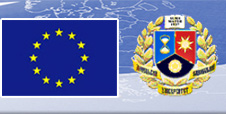
|
Could CO2 leak from the reservoir and,
if so, what might be the consequences?
|
Based on the study of natural systems, carefully chosen storage sites are not expected to show any significant leakage. Natural reservoirs containing gas help us understand the conditions under which gas is trapped or released. In addition, leaking sites help us understand what the possible impacts of CO2 leakage could be.
Leakage pathways
In general, potential leakage pathways are either man-made (such as deep wells) or natural (such as fracture systems and faults).
Both active and abandoned wells could constitute migration pathways because firstly, they form a direct connection between the surface and the reservoir, and secondly, they are composed of man-made materials that may corrode over long periods of time (Fig. 1). An added complication is that not all wells are created using the same techniques, and thus newer wells are generally more secure than older ones. In any case, the risk due to leakage through wells is expected to be low because both new and old wells can be monitored very effectively using sensitive geochemical and geophysical methods, and because technology already exists in the petroleum industry for any remedial action that may be needed.
Flow along natural faults and fractures that could exist in the cap rock or the overburden* is more complex because we are dealing with irregular, planar features with variable permeability. A good scientific and technical understanding of both leaking and non-leaking natural systems will allow us to design CO2 storage projects that have the same characteristics of naturally occurring reservoirs that have trapped CO2 and methane for thousands to millions of years.

|
Figure 1
Possible pathways for CO2 in a well.
Escape via altered material (c, d, e) or along interfaces (a, b, f).
|
Natural analogues: lessons learned
Natural systems (so-called “analogues”) are invaluable sources of information for improving our understanding of deep gas migration and the natural exchange of gases between the earth and the atmosphere. The main findings derived from the study of numerous leaking and non-leaking natural gas reservoirs are:
• under favourable geological conditions, naturally produced gas can be trapped for hundreds of thousands to millions of years;
• isolated gas reservoirs and pockets even exist in the least-favourable geological settings (volcanic areas);
• the migration of any significant amount of gas requires advection (i.e. pressure-driven flow) because diffusion is a very slow process;
• for advection to occur, the fluid conditions in the reservoir need to be close to lithostatic pressure* to keep faults and fractures open or to mechanically create new pathways;
• areas where naturally produced gas leaks to the surface are situated almost exclusively in highly fractured volcanic and seismic regions, with gas vents lying along active or recently activated faults;
• significant gas leaks exist only rarely and tend to be restricted to highly faulted volcanic and geothermal areas where CO2 is continuously produced by natural processes;
• gas anomalies at the surface usually occur as localized spots that have a limited spatial impact on the near-surface environment.
Therefore, the combination of a number of specific conditions are needed before leakage can occur. Consequently, it is highly unlikely that a well-chosen and carefully engineered CO2 geological storage site will leak. Although the potential for leakage is small, the associated processes and potential effects must be fully understood in order to choose, design and operate the safest possible CO2 geological storage sites.
Impact on humans
We breathe CO2 all the time. CO2 is only dangerous for human health at very high concentrations, with values up to 50,000 ppm (5%) causing headaches, dizziness, and nausea. Values above this level can cause death if exposure is too long, especially by asphyxia when the concentration of oxygen in the air falls below the 16% level required to sustain human life. However, if CO2 leaks in an open or flat-lying area, it quickly becomes dispersed into the air, even with low winds. The potential risk to populations is thus restricted to leakage in enclosed environments or topographical depressions, where concentrations may rise because CO2 is denser than air and tends to accumulate close to the ground. The knowledge of the characteristics of degassing areas is useful in risk prevention and management. In reality, many people live in areas characterized by daily natural gas emanations. For example, in Italy at Ciampino, near Rome, houses are located only 30 metres from gas vents, where CO2 concentrations in the soil reach 90% and about 7 tons of CO2 are released daily into the atmosphere. The local inhabitants avoid any danger by following simple precautions, such as not sleeping in the basement and keeping the houses well ventilated.
Impact on the environment
Potential impacts on the ecosystems would vary depending on whether the storage site is located offshore or onshore.
In marine ecosystems, the main effect of CO2 leakage is local lowering of the pH and its associated impact, primarily on animals that live on the seafloor and can not move away. However, the consequences are spatially limited and the ecosystem soon shows signs of recovery after the leakage subsides.
In terrestrial ecosystems, impact can be broadly summarized as follows:
• vegetation – Although soil gas CO2 concentrations of up to about 20-30% can actually favour plant fertilization and increase the growth rate for certain species, values above this threshold can be lethal to some, but not all plants. This effect is extremely localized around the gas vent, however, and the vegetation remains robust and healthy only a few metres away (Fig. 2).
• groundwater quality – The chemical composition of groundwater could be altered by the addition of CO2, as the water becomes more acidic and elements may be released from the aquifer’s rocks and minerals. Even if CO2 should leak into a drinking-water aquifer, the effects would remain localized and quantification of the impacts is currently being investigated by researchers. Interestingly, many aquifers throughout Europe are enriched in natural CO2, and this water is actually bottled and sold as “sparkling mineral water”.
• rock integrity – The acidification of groundwater can result in rock dissolution, decreased structural integrity, and the formation of sinkholes. However, this type of impact only occurs under very specific geological and hydrogeological conditions (tectonically active, high flow rate aquifers, carbonate-rich mineralogy), which are not likely to occur above a man-made geological storage site.

|
Figure 2
Impact of CO2 leakage on vegetation with a high (left) and reduced (right) flux.
Impact is limited to the area where CO2 escapes.
|
In conclusion, as the impacts of any hypothetical CO2 leakage will depend on the specific site, a thorough knowledge of the underlying geological and structural setting will allow us to identify any potential gas migration pathways, choose sites with the lowest potential of CO2 leakage, predict gas behaviour and thus evaluate, and prevent, any significant impact on humans and the ecosystem.
Source: The European Network of Excellence on the Geological Storage of CO2
<< Previous page
---
Next page >>
TOP
|





